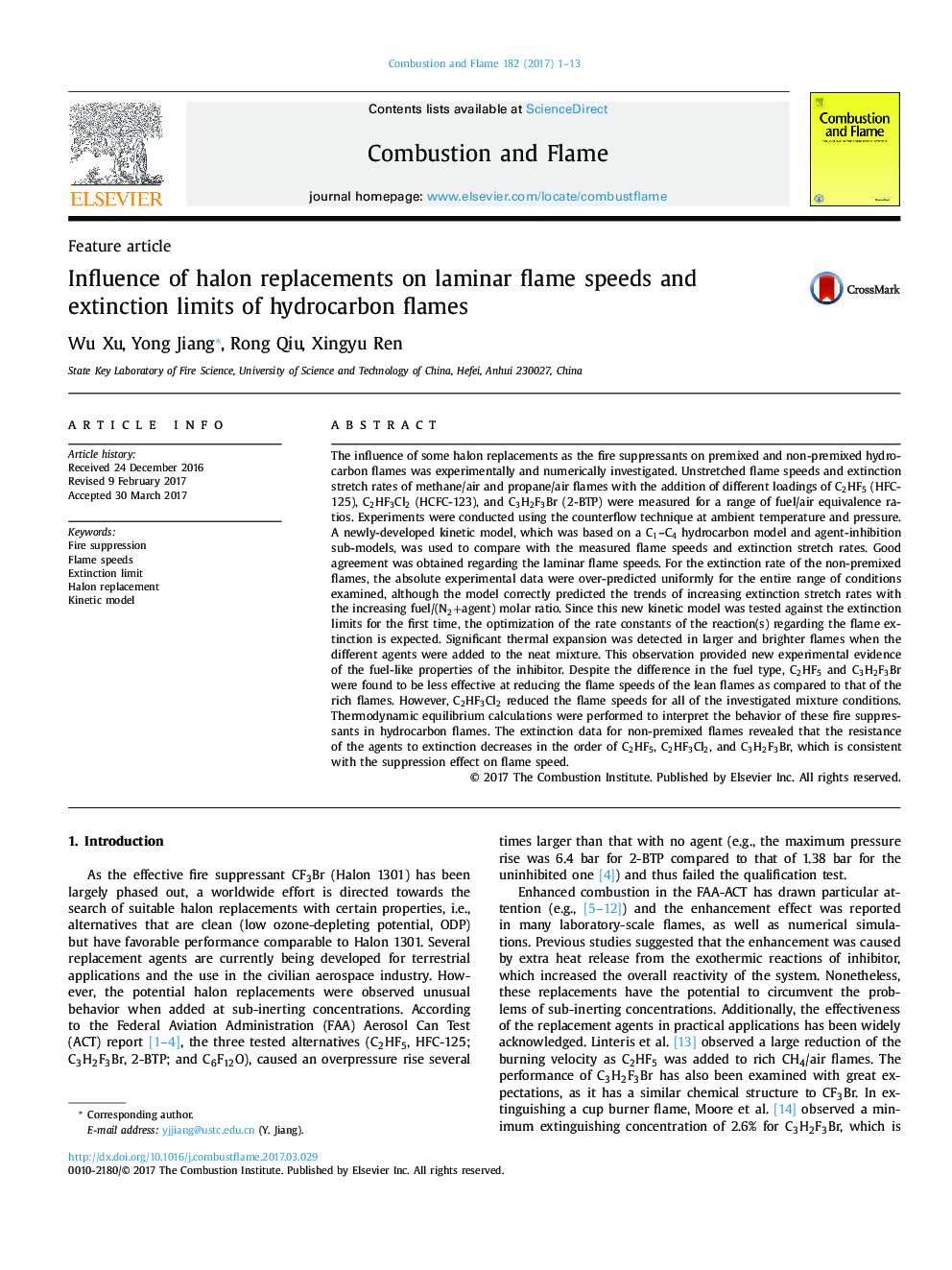| کد مقاله | کد نشریه | سال انتشار | مقاله انگلیسی | نسخه تمام متن |
|---|---|---|---|---|
| 4764406 | 1423555 | 2017 | 13 صفحه PDF | دانلود رایگان |
عنوان انگلیسی مقاله ISI
Influence of halon replacements on laminar flame speeds and extinction limits of hydrocarbon flames
ترجمه فارسی عنوان
تأثیر جایگزینی هالون در سرعت شعله ور شدن و محدود کردن انقراض شعله های هیدروکربن
دانلود مقاله + سفارش ترجمه
دانلود مقاله ISI انگلیسی
رایگان برای ایرانیان
کلمات کلیدی
سرکوب آتش، شعله سرعت، محدودیت انقراض، جایگزینی هالون، مدل جنبشی،
موضوعات مرتبط
مهندسی و علوم پایه
مهندسی شیمی
مهندسی شیمی (عمومی)
چکیده انگلیسی
The influence of some halon replacements as the fire suppressants on premixed and non-premixed hydrocarbon flames was experimentally and numerically investigated. Unstretched flame speeds and extinction stretch rates of methane/air and propane/air flames with the addition of different loadings of C2HF5 (HFC-125), C2HF3Cl2 (HCFC-123), and C3H2F3Br (2-BTP) were measured for a range of fuel/air equivalence ratios. Experiments were conducted using the counterflow technique at ambient temperature and pressure. A newly-developed kinetic model, which was based on a C1âC4 hydrocarbon model and agent-inhibition sub-models, was used to compare with the measured flame speeds and extinction stretch rates. Good agreement was obtained regarding the laminar flame speeds. For the extinction rate of the non-premixed flames, the absolute experimental data were over-predicted uniformly for the entire range of conditions examined, although the model correctly predicted the trends of increasing extinction stretch rates with the increasing fuel/(N2+agent) molar ratio. Since this new kinetic model was tested against the extinction limits for the first time, the optimization of the rate constants of the reaction(s) regarding the flame extinction is expected. Significant thermal expansion was detected in larger and brighter flames when the different agents were added to the neat mixture. This observation provided new experimental evidence of the fuel-like properties of the inhibitor. Despite the difference in the fuel type, C2HF5 and C3H2F3Br were found to be less effective at reducing the flame speeds of the lean flames as compared to that of the rich flames. However, C2HF3Cl2 reduced the flame speeds for all of the investigated mixture conditions. Thermodynamic equilibrium calculations were performed to interpret the behavior of these fire suppressants in hydrocarbon flames. The extinction data for non-premixed flames revealed that the resistance of the agents to extinction decreases in the order of C2HF5, C2HF3Cl2, and C3H2F3Br, which is consistent with the suppression effect on flame speed.
ناشر
Database: Elsevier - ScienceDirect (ساینس دایرکت)
Journal: Combustion and Flame - Volume 182, August 2017, Pages 1-13
Journal: Combustion and Flame - Volume 182, August 2017, Pages 1-13
نویسندگان
Xu Wu, Jiang Yong, Qiu Rong, Ren Xingyu,
